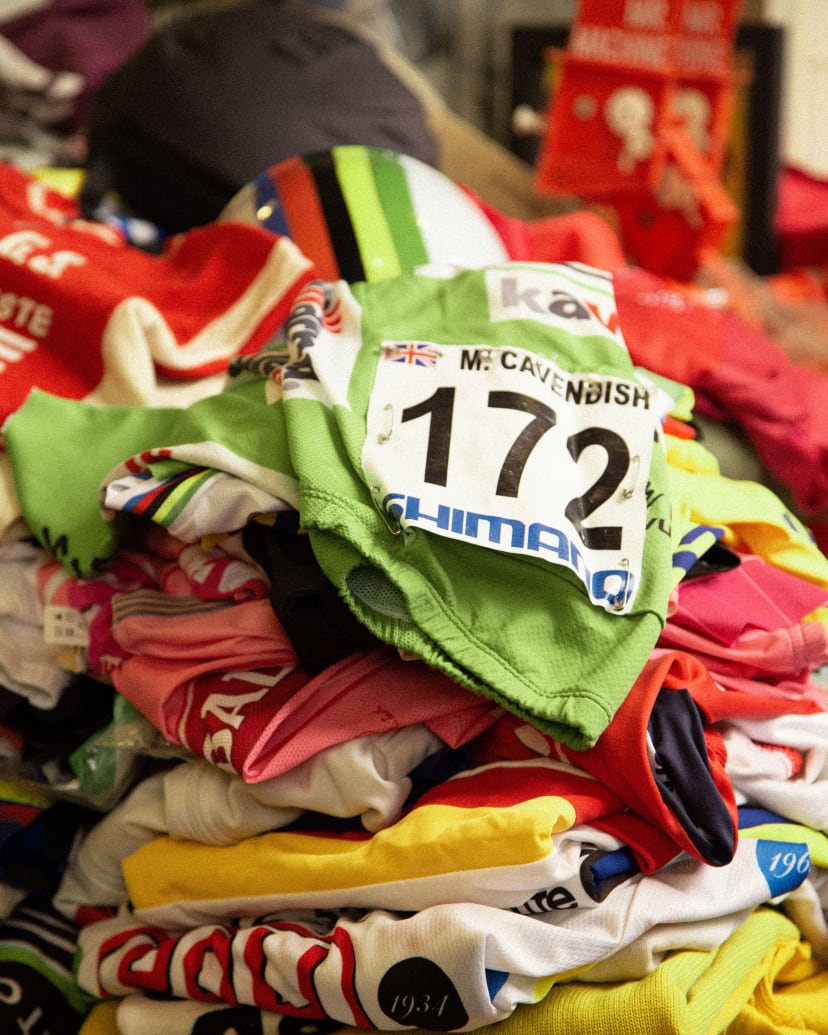Paul’s Camera Collection
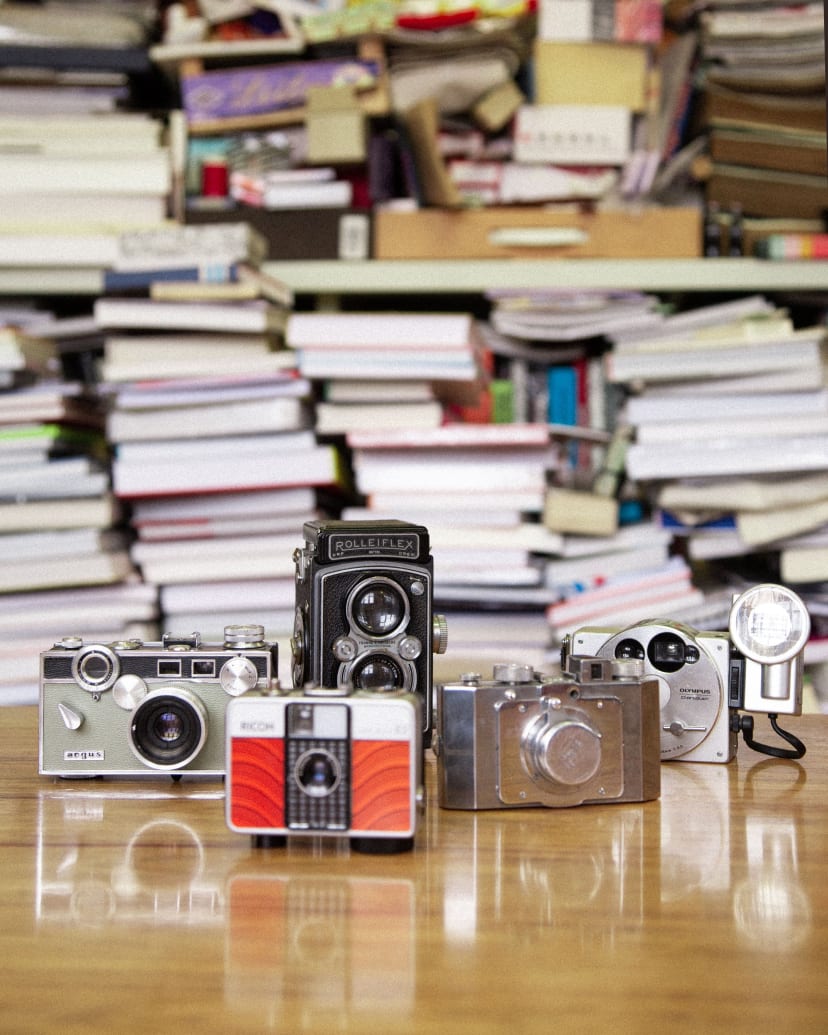
For the second instalment in our series, we take a glimpse inside Paul’s camera collection – and chat with him about the passion for photography he inherited from his father.
There’s a framed photo in Paul’s office. It’s one of many to be fair, but this one is particularly special. Black and white, it shows Paul as a young boy in a striped T-shirt sitting atop a ‘flying’ carpet soaring above the dome of the iconic Brighton Pavilion. “It was taken in the back garden at our house in Beeston,” Paul says. “I came home from school and saw my father had wired the rug through the edges and propped it on top of old fruit boxes. And he said, ‘oh, before you go do your homework, can you just sit on here and pretend you’re going to fly.’”
A few weeks later, his father presented him with the finished product: the trick photograph that now hangs in Paul’s office in London. An amateur photographer and co-founder of the Beeston Camera Club in Nottingham, Paul’s father was the one who instilled a passion for cameras and photography in him, giving him his first camera aged 11. In tribute to their shared passion, after his passing, Paul published a limited-edition book – dubbed Father & Son – of photographs from the pair. “He thought about composition, light, witty juxtapositions, experiment,” Paul wrote in the book. “Not only taking photographs but also developing and printing all his own work in his home-made attic darkroom.”
A few decades and countless cameras later, and Paul is still as passionate as ever about taking pictures. Only fitting then that the next in our Office Sundays series should explore his extensive collection. Here’s the story behind five of Paul’s favourites.
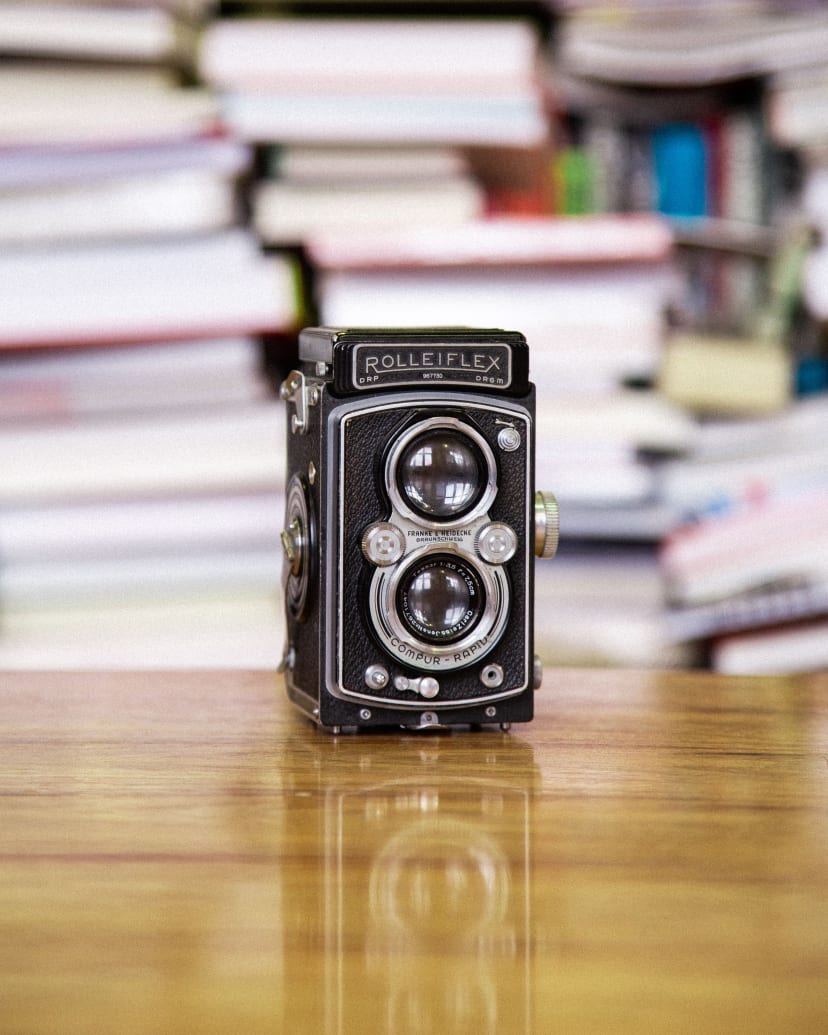
The Rolleiflex Camera
Widely considered one of the most iconic cameras of all time – I mean, just look at it? – this Rolleiflex camera belonged to Paul’s father Harold Smith who, as the incredible flying carpet photograph proves, had something of a penchant for trick photography. This particular model itself dates to 1958 and is one of the most treasured pieces in Paul’s collection. In fact, you could say that Paul wouldn’t have nurtured his own passion for taking pictures and cameras without it. “Photography was a world I entered because of my father,” Paul explains.

The Ricoh Auto Half Camera
Just one of many Japanese-made cameras Paul owns, the Ricoh Auto Half was only produced for a short three-year period between 1960 and 1963 – but its good looks, compact size and simple operation meant that revival versions continued to debut in the 1970s. This iteration – the E2 model – has a retro burnt orange face. One of the things that Paul loves so much about using older cameras is that you have look – but also see. “When you take a picture these days with your phone, you just press a button 40 times and get rid of 39 of them,” he explains. “With film cameras you have to be more observant. I’m a lot more observant than maybe I would have been because my father taught me to compose a shot.”
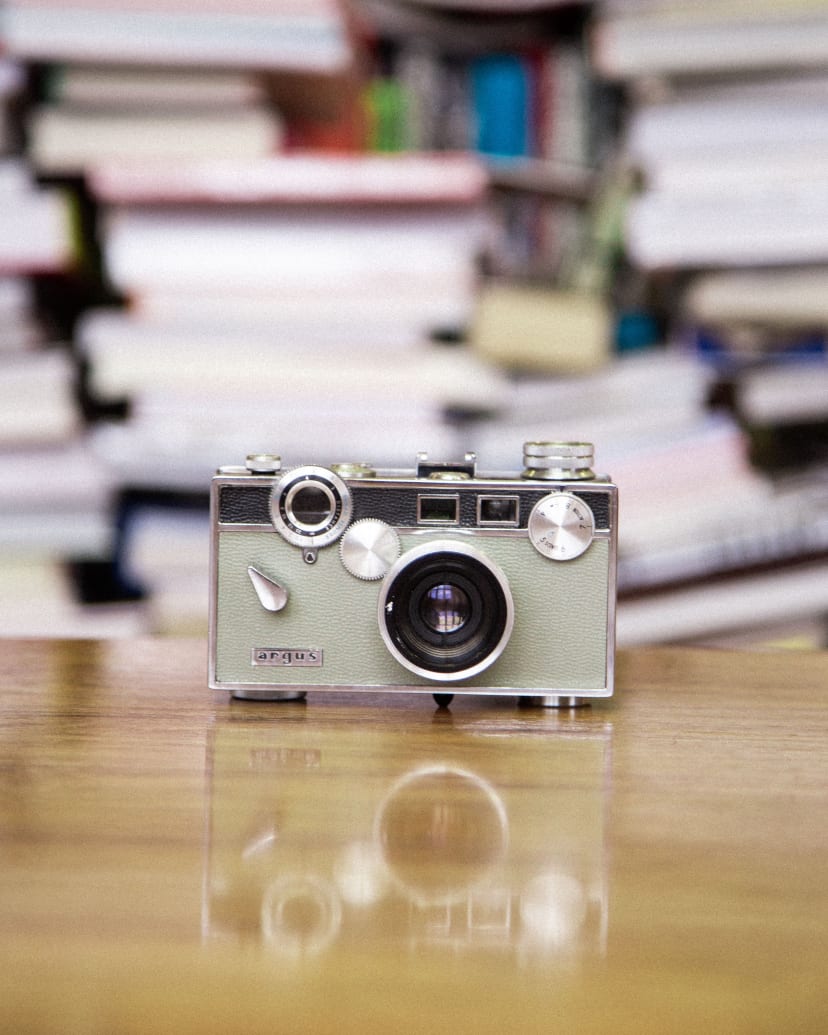
The Argus C3 Camera (aka ‘The Brick’)
One of the most popular cameras in photographic history, the C3 is an iconic model produced from 1939 to 1966 in Ann Arbor, Michigan. It sold a whopping 2.2 million units during its lifetime. Designed by Gustave Fassin with a distinctly angular shape and weighty structure, it became, affectionately or otherwise, known as ‘The Brick’. Intended for a mass audience, the Argus C3’s incredible appeal was attributed, at least in part, to its apparently ‘scientific’ look and feel. And despite its apparently cumbersome weight, it was the camera of choice for legendary World War II photographer Tony Vaccaro, who was lauded for his photos of soldiers on the frontline and depicting the horrors of war.

The Olympus O-Product Camera
Released in 1988, this is one of the newer cameras in Paul’s collection, but its design was truly unique for the time. Dreamed up by Naoki Sakai – who Paul knew from his many trips to Japan – the Olympus O-Product was a confident blend of the old and the new and anticipated the trend for nostalgia and retro-futuristic design that was about to explode. Unlike the majority of cameras around in the late 1980s, which were made from plastic, it has an all-aluminium body and detachable flash mount – a throwback to the old-fashioned press cameras of yesteryear. And there’s a surprise on the inside: when you open the back, you’re greeted with a message from Olympus: “A new concept in product design. Olympus O-Product. Functional imperatives molded to artistic form. A camera shaped with simple lines, elegant contours.”
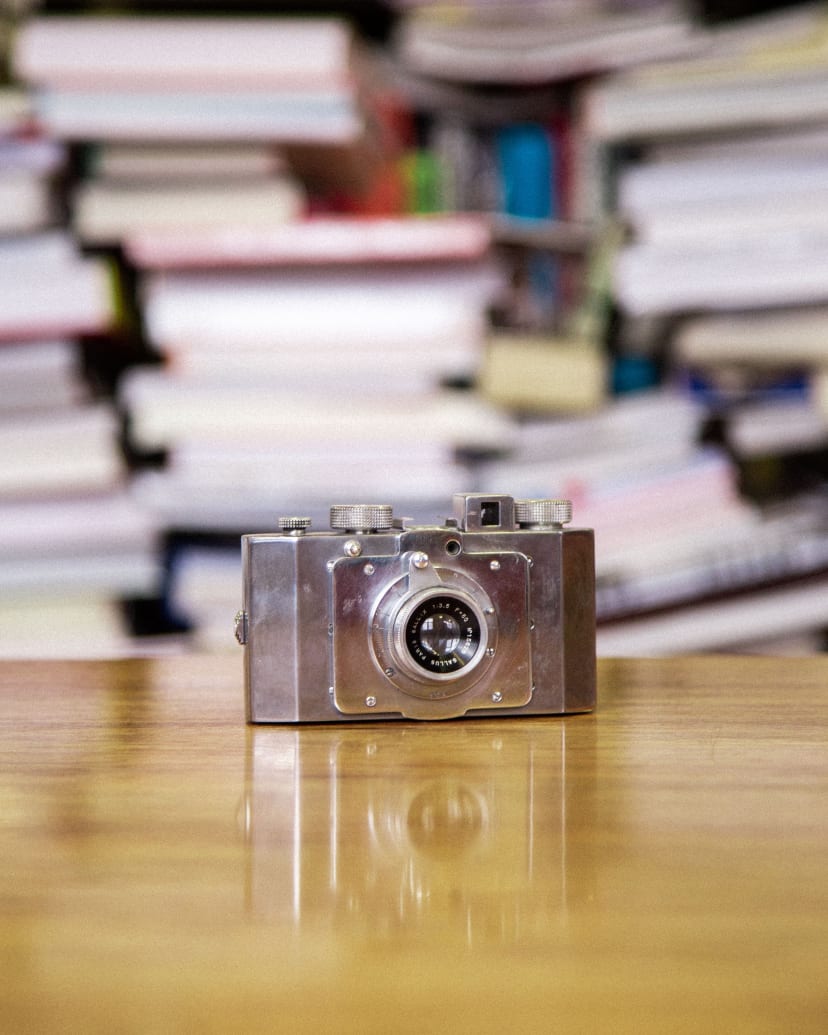
The Derlux Camera
The next camera on Paul’s list is unusual, not least because of its French origins. Made by Gallus of Paris, the Derlux camera (previously known as the Derby-Lux) is striking for its singular die-cast all-aluminium body – one of the things Paul likes best about it. But the quirk was born out of necessity: the lack of raw materials during the war and post-war period meant steel and iron were in short supply. Simultaneously space age and Art Deco, it’s one of the most striking pieces in Paul’s collection.
Discover More
Do you want to keep in touch?
Published: 07.23
Words: Molly Isabella Smith
Photos: Helen Gibson
